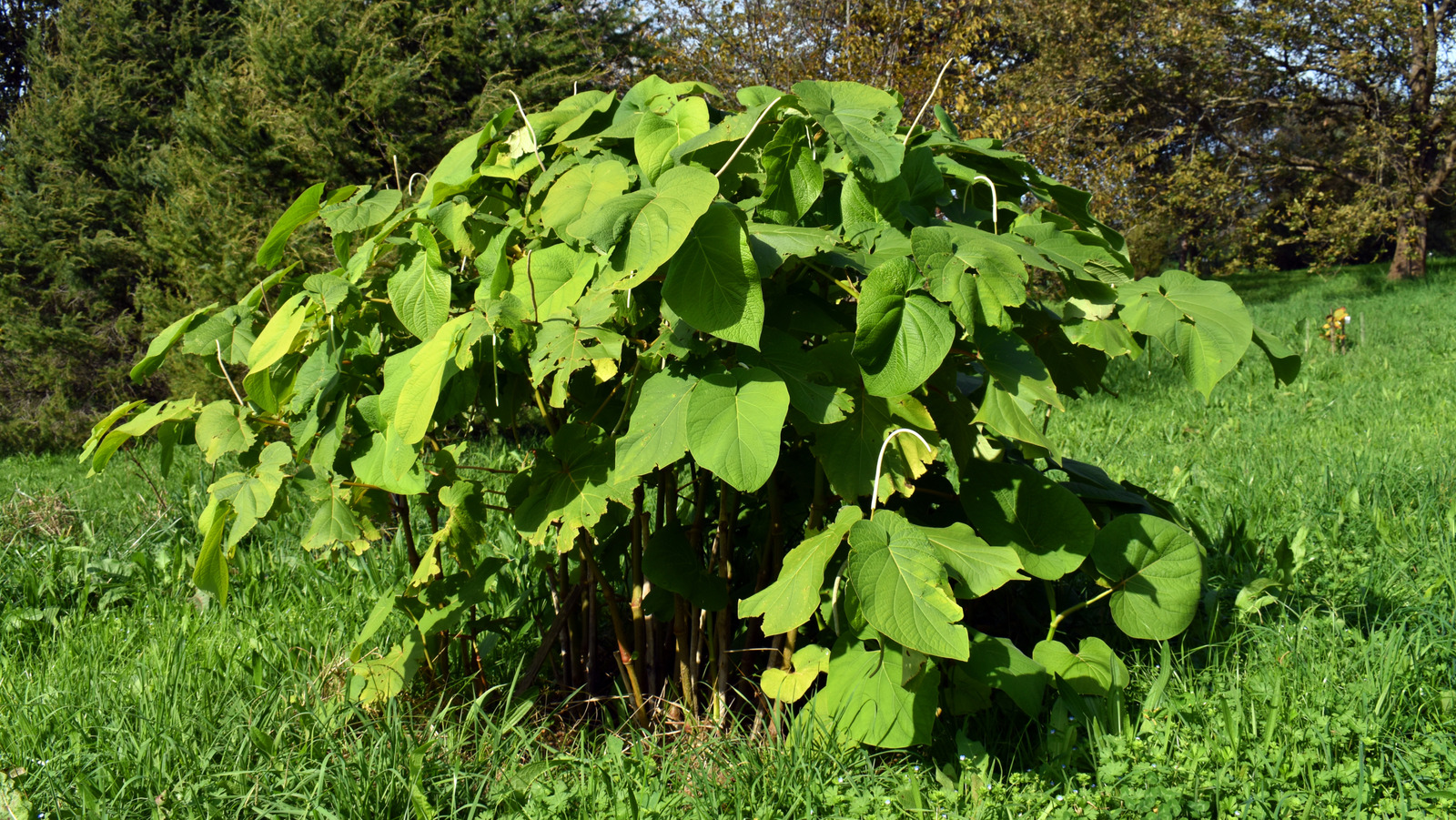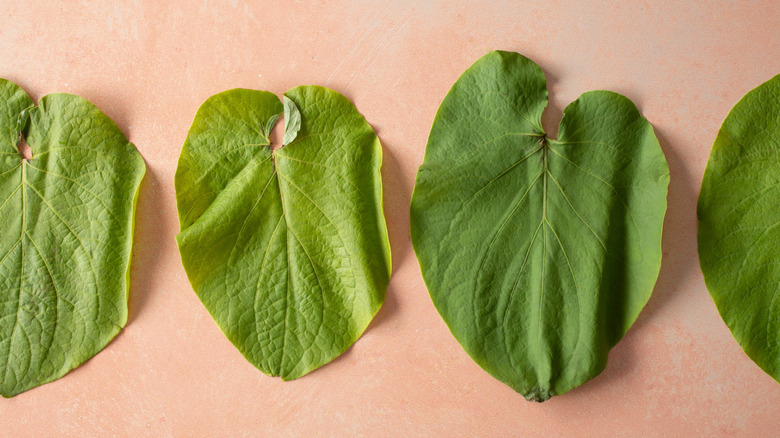We may receive a commission on purchases made from links.
Growing your own herbs and spices at home can be super satisfying — just grab a few leaves and dice them up or toss them directly in a saute, soup, or stir fry. Sure, we’ve all heard about growing basil, oregano, or thyme in the kitchen. And, if you’re growing an indoor herb garden, there are some rookie mistakes to avoid. But what about a root beer plant?
Now, to be clear, this isn’t an ingredient you’ll find in any of the soda varieties tested in Chowhound’s ranking of popular root beers. This is piper auritum, commonly called hoja santa, yerba santa, or hierba santa (“holy leaf” or “holy herb”) in Spanish — or root beer plant or Mexican pepperleaf in English.
It’s a tropical, broad-leafed shrub that can grow as easily as a potted houseplant inside your house or a small tree outside. Its name in English comes from the taste and scent of the leaves — like a fragrant, earthy, licorice flavor that’s not terribly pungent, so it’s easy to experiment with. Because the leaves are so large, you can just pluck one at a time, and it’s a perennial, so it’s always producing new leaves that will be ready to try in any culinary experiments. Luckily, it’s fairly easy to cultivate a root beer plant at home and reap the flavorful rewards.
How to grow your root beer plant and what to use it for
Piper auritum is native to Colombia, Central America, and approximately the bottom half of Mexico, so it thrives in hot weather. Its Latin name is derived from piper, “pepper,” and auritus, “eared” or “with ears,” because the leaves sort of taste like a pepper and look like big ears. It can grow in full sun, but will need constant watering. In shade, the leaves will grow a bit larger and darker in color. Just be careful when planting it outdoors because it’s considered an invasive species in Florida, Hawaii, and other parts of the United States. If you’re growing a root beer plant inside, it can handle moderate temperatures, but you’ll need to monitor the soil humidity, so it doesn’t get too dry. You can order Mexican pepperleaf seeds online, or, depending on where you live, you can get a whole plant from a nursery. If growing them from seed, just be sure not to let the soil get too waterlogged, or they may not make it.
Once your plants have matured, simply pull off a leaf and dice it for an herbaceous sprinkle on top of your eggs or roasted chicken, or for some extra spice in soups. It’s a regular ingredient in Oaxacan mole verde, sometimes pressed directly into one side of a fresh tortilla before heating, and even used as another easy swap for tamale wrappers. The root beer plant’s mild, anise-tinged leaves will bring a nice bright flavor, however you choose to use them, and they can always be standing at the ready in the garden or in a pot next to the window.






